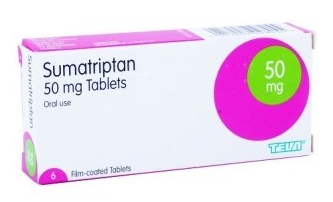Goodbye, Chronic Migraine?!?
What I tried, and what worked for me.
Shhh … but, I think my chronic migraines are … not so chronic anymore.
I’m afraid to say it. I’m afraid if I say out loud that I’ve found my “cure” – however incomplete, however temporary it may be – I’ll jinx it. Cross my fingers, knock on wood, throw salt over my shoulder, whatever it takes, but … for today, migraines are not the boss of me.
I suffered intractable, near-constant migraines starting in 2011. They affected everything: my job, my parenting, all of my relationships (note to self: call friends and ask if they remember me). I thought this “new normal” would define the rest of my life. But certain therapies, which I discuss below, seem to have forced the clouds to part. I am starting to see a rainbow. I know that this disease could come roaring back, but for months now, I have been able to function like a person without serious disability. I’m sharing my story in case you, or someone you love, suffers chronic migraine. Maybe you’ll want to talk to your doctor about one of the therapies below; or maybe they have all failed you. But the most important point is: I am proof the cycle can abate. THERE IS HOPE.
A caveat: My migraine treatment hasn’t been a careful, scientific endeavor to suss out what works. I begged my neurologists to throw everything at the wall, to see what sticks. It’s impossible to know if my half a decade lost to migraine would have resolved without intervention. Disease processes can regress to the mean. But I think I noted some significant improvement after the introduction of a couple of key therapies. (The most useful ones are toward the end of the list).
Morphine and Phenergan
ooo, look at you, morphine
This was Day 1 stuff. I had never had a migraine, and did not know what it was. I could only report to the ER docs that my head was broken and that I was seeing things. Elaborate, colorful things. Additionally, I assured them, I planned to vomit shortly. They dosed me up, took some blood, and took all sorts of images of my broken head. The morphine helped, but only for short periods. The Phenergan helped my nausea, but put me to sleep. Helpful stuff; but you can’t take it daily and go put in a good day’s work. And morphine is horribly addictive. Not good long-term solutions.
Amitriptyline and Magnesium
My “little yellow pill” was the first thing my neurologist tried, along with magnesium supplementation. This combination seemed to reduce the frequency of headaches a little, so I have continued taking them. As you may have read, however, a study in JAMA showed that drugs like Amitriptyline, called anticholinergics, have been shown to cause brain atrophy. That study looked at older adults (a mean of 73 years old), but it made me nervous. My neurologist agreed to reduce my dosage to 25 mg., and I have not noticed any increase in migraine activity.
Butalbital (Fioricet)
This combo of acetaminophen and caffeine with a barbiturate seemed to make my headaches worse. Maybe because caffeine is a trigger for me? I tried a version of this medication without the caffeine, and it helped some as an abortive med, if only to help me fall asleep. In the early days, all I could really do to come out the fog enough to partially function was to sleep it off. I used it enough that rebound headaches became an issue, and it made me too sleepy to work. Definitely not a good long-term solution for me.
Sumatriptan
Triptans make me feel like my scalp is crawling with icy ants. The feeling is strange enough when I take the pill, but when I use a faster delivery method, like the auto-injector, it hits me really fast, as if I’m performing an ice-bucket challenge. But they sometimes seemed to help me wake up more functional. Again, triptans are only abortive, so they didn’t help with the ultimate goal: preventing migraines from starting.
The one that makes you lose your words
How appropriate that, even now, I have trouble coming up with the word “topiramate.” At this point in my treatment, I was still losing a couple of days a week to migraine. My doctor was starting to talk about Botox, but first we had to satisfy my insurance company that I had failed one more drug. So my doctor, somewhat reluctantly, put me on topiramate, asking, “Just how important is the use of language to your job?” It turns out that topiramate causes "language disturbances" in a fairly large number of migraine sufferers. Well, I am an attorney who at that time was clerking for federal judges who would, it turns out, quite like their orders to be coherent. Using the word “squirrel” when “statute” would do was a nonstarter. I’m not sure I did experience language disturbances, but the stress of possibly sending a judge a word salad – and not being able to recognize it – terrified me so much it gave me migraines. (Note: I’ve read that side effect abates after a month; maybe I should have given it more time).
Botox
Thank God for Botox. It is painful as hell, and once made a terrible fool out of me, but it works. I can feel it blocking the migraine as the pain spreads across my scalp. It’s like the pain hits a wall and can’t go any further. It reduced the number of migraine days by half, and reduced the severity of all the migraines. Once upon a time, I always felt like I had some degree of the illness active every moment. The Botox changed my life.
Butorphanol
Though the Botox helped a lot, I continued to suffer some knock-me-on-my-butt headaches. In frustration, I asked my current neurologist for something to just put out the migraine fire, something more powerful than butalbital. She gave me a nasal inhaler which delivers a synthetic opioid, butorphonol. I feel like I’m snorting a line of morphine up my nose … because I basically am. I have found that if I use it in conjunction with a triptan, I can wake up without a migraine. It is no long term solution, of course; we have an opioid crisis in this country, and I personally can’t function on the stuff. It makes me simultaneously high and agitated. Yuck. I appreciate the danger of this kind of addictive drug, and use it only on the rare occasions that I can’t function anymore. Thankfully, I have not needed it in months, due to the addition of the SPG to my regimen (below).
B Vitamins
My neurologist said there is some evidence that certain B vitamins can help prevent migraines. I am currently using L-methylfolate and hydroxocobalamin (B-12) after she suggested that I use 23andme to determine my MTHFR gene mutations, in case that could help us identify the right supplements for my body. I did the test, then looked up which B vitamins worked best for my compound heterozygous C677T and A1298C genes. I’m not sure I got it right, but so far, so good.
Sphenopalatine Ganglion Block
The SPG, a/k/a the Holy Freaking Grail, is simple: the doctor uses a device called the Tx360 to thread a little tube up my nose, and squirts some non-narcotic medication up there that, somehow, calms down my migraine machinery. IMMEDIATELY. The only side effect is a slight bad taste in my mouth. My neurologist used the SPG at first to abort a few acute migraines. They worked. So she entered me in a study in which she used it three times a week for six weeks, to see if SPGs could retrain my migraine machine. This was months and months ago, and it seems to have done the trick. Not only have migraines become very infrequent – there have even been thunderstorms I rode out unharmed, and those are usually my biggest triggers – but I don’t have the extreme sensitivity to light and odors that I had developed, with such acuity my daughter insisted I must be some sort of vampire.
My experience is purely anecdotal, and definitely does not constitute medical advice. There is no telling if the same interventions will work for you. But I hope that this chronology is useful to someone, if only to make your journey feel less lonely. Questions, concerns, suggestions? Hit me up on Twitter @MadMigraineMom or on the blog at katcoffee.wordpress.com.









